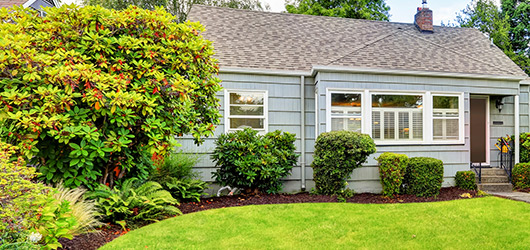Secondary Dwelling

What is a secondary dwelling?
A secondary dwelling or granny flat is a self-contained dwelling on the same lot of land as the principal dwelling (not being an individual lot in a strata plan or community title scheme). A secondary dwelling may be constructed in the following forms:
- Attached to the principal dwelling
- Detached from the principal dwelling
- Separate dwelling within the principal dwelling
In what zones are secondary dwellings permitted?
Secondary dwellings are permitted with development consent in residential zones (includes R2, R3 and R4 zones) under the State Environmental Planning Policy (Housing) 2021 (Housing SEPP).
Secondary dwellings are also permitted with development consent in rural zones (includes RU1, RU2, RU4 and RU5) under the Hornsby LEP 2013.
What is the maximum permitted size of a secondary dwelling in residential zones?
The maximum permitted size of a secondary dwelling in a residential zones is 60 square metres.
What is the maximum permitted size of a secondary dwelling in rural zones?
In rural zones, the maximum permitted size of secondary dwellings is 120 square metres or 33% of the principal dwelling, whichever is the greater.
Note: The maximum permitted size of secondary dwellings in rural areas increased from 60 square metres to 120 square metres in 2021. The requirement for the secondary dwelling to not exceed 33% of the gross floor area of the principal dwelling in rural areas is retained.
The new controls are contained within Clause 5.5 of the Hornsby LEP 2013. Controls in the 2.27 of the Hornsby DCP 2024 will be updated to reflect the new LEP controls.
Where can I find the requirements for a secondary dwelling?
The requirements for secondary dwellings in residential zones are within the Housing SEPP.
For proposals in rural areas, the requirements are set out in the Hornsby LEP 2013 and the Hornsby DCP 2024
Note: The Hornsby DCP 2024 will be updated to be consistent with the size controls for secondary dwellings under Clause 5.5 of the Hornsby LEP 2013.
Can I subdivide a secondary dwelling?
No. Secondary dwellings must remain on the same title as the principal dwelling and can only be sold together.
Does a Section 7.11 levy apply?
Yes. Section 7.11 (formerly Section 94) Development Contributions apply to all new secondary dwellings, including alterations and additions to an existing dwelling to create a secondary dwelling.
Do Building Code of Australia (BCA) requirements apply?
Yes. All relevant requirements within the BCA apply. Some secondary dwellings may change the building classification under the BCA.
Where can I find the requirements for a secondary dwelling?
These are available from the NSW Department of Planning and Infrastructure website. The design requirements for secondary dwellings in rural areas can be found in the Rural chapter of the Hornsby Development Control Plan.
How do I apply for approval to build a secondary dwelling?
There are two ways to apply for approval:
Complying development in residential zones
If your plans for a secondary dwelling satisfy all the provisions of the Housing SEPP 2021 and the requirements of the Exempt and Complying Development Codes SEPP 2008 you can apply to have the development approved by a Council-accredited certifier or private accredited certifier.
Development application
If your proposal is in a rural zone or does not meet all the requirements under the Housing SEPP 2021 and the Exempt and Complying Development Codes SEPP 2008, you will need to lodge a Development Application with Council. The secondary dwelling will be required to meet the requirements of the Hornsby Local Environmental Plan 2013.







